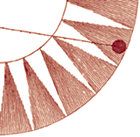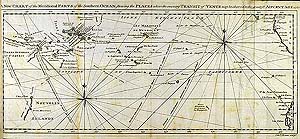The first observed transit of Venus was seen by just two people in 1639. By comparison, the next transits of 1761 and 1769 were immense enterprises.
.To use the transits as an accurate measure of the distance from the Earth to the Sun, observations had to be made from widely-spaced locations. Established observatories in Europe could make some of the necessary observations, but not all.
.
European nations vied with each other to send out expeditions to remote parts of the globe. Captain Cook’s first voyage around the world is the most famous of these expeditions. He was sent to Tahiti in 1769 specifically to observe the transit. The orchestration of the many other observers resulted in an endeavour on an unprecedented international scale.
.Precise observations were essential. In Britain, the Royal Society specified the equipment that the official expeditions should use. In the following section of the exhibition we display standard instruments of the type issued to observers.






 The Transit Method
The Transit Method Transits in Print
Transits in Print Staging the Transit
Staging the Transit A Commercial and
A Commercial and  Transit Geography
Transit Geography Timing the Transits
Timing the Transits Viewing the Transits
Viewing the Transits Transit Places
Transit Places Oxford Observations
Oxford Observations Results
Results